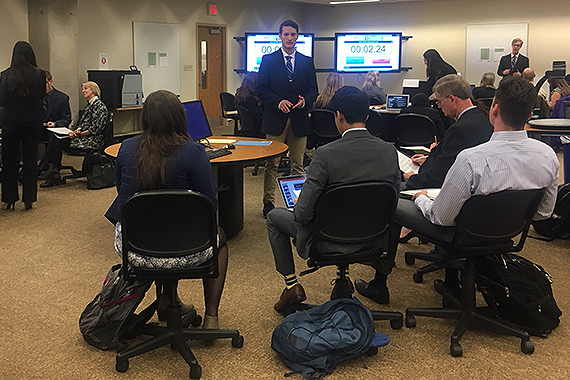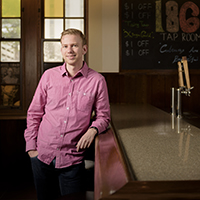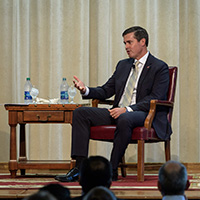 The involvement of alumni in Professional Career Management (MGMT 295) is critical throughout every stage of the course, which includes an alumni connect activity, mock interviews and capstone presentations.
The involvement of alumni in Professional Career Management (MGMT 295) is critical throughout every stage of the course, which includes an alumni connect activity, mock interviews and capstone presentations.
Alumni IMPACT
Redesigned course links students with alumni and professionals
When Professional Career Management (MGMT 295) was most recently redesigned in 2017, two key goals guided the process. The first was to continue refining it from an upper-division course into one for freshmen and sophomores.
“We wanted to offer students the tools and strategies needed to be successful in their careers sooner in the college experience,” says Krannert staffer Brooke Linn, who is co-instructor of the course with Jessica Chapman.
The second was to further restructure it under the IMPACT (Instruction Matters: Purdue Academic Course Transformation) model by incorporating more active and collaborative learning as well as other student-centered teaching and learning practices and technologies that foster student engagement and competence, as well as increased attainment of course-specific learning outcomes.
For Linn and Chapman, the latter meant involving alumni in the course at multiple stages, beginning with an “alumni connect” activity that assigned individual students to an alum or other working professional. Previously, teams of students were assigned to make the connection, reducing the opportunity for one-on-one interaction.
“The students were tasked with researching their careers, connecting with them on LinkedIn, the Krannert Network or their company’s website and providing a list of questions to ask in an informational interview,” Chapman says. “They asked them about courses they wished they had taken and experiences they had at Purdue that helped them in their career.”
Students connected with alumni and professionals working in their field of interest for mock interviews again about midway through the course, as well as at the end for capstone presentations.
“We ask students to pick a dream job and describe how they are going to get there,” Linn says. “That helps them realize that their career plans may change. We want them to learn how to be resilient in their careers, to make changes when necessary, and not become complacent.”
“It’s important for students to understand that career paths aren’t always linear,” Chapman adds. “We can tell them as instructors how to navigate the ups and downs, but it’s more meaningful when an alum who has been in their shoes can share the same lesson.”
In fact, Chapman and Linn say response to the restructured course has been “overwhelmingly positive.”






